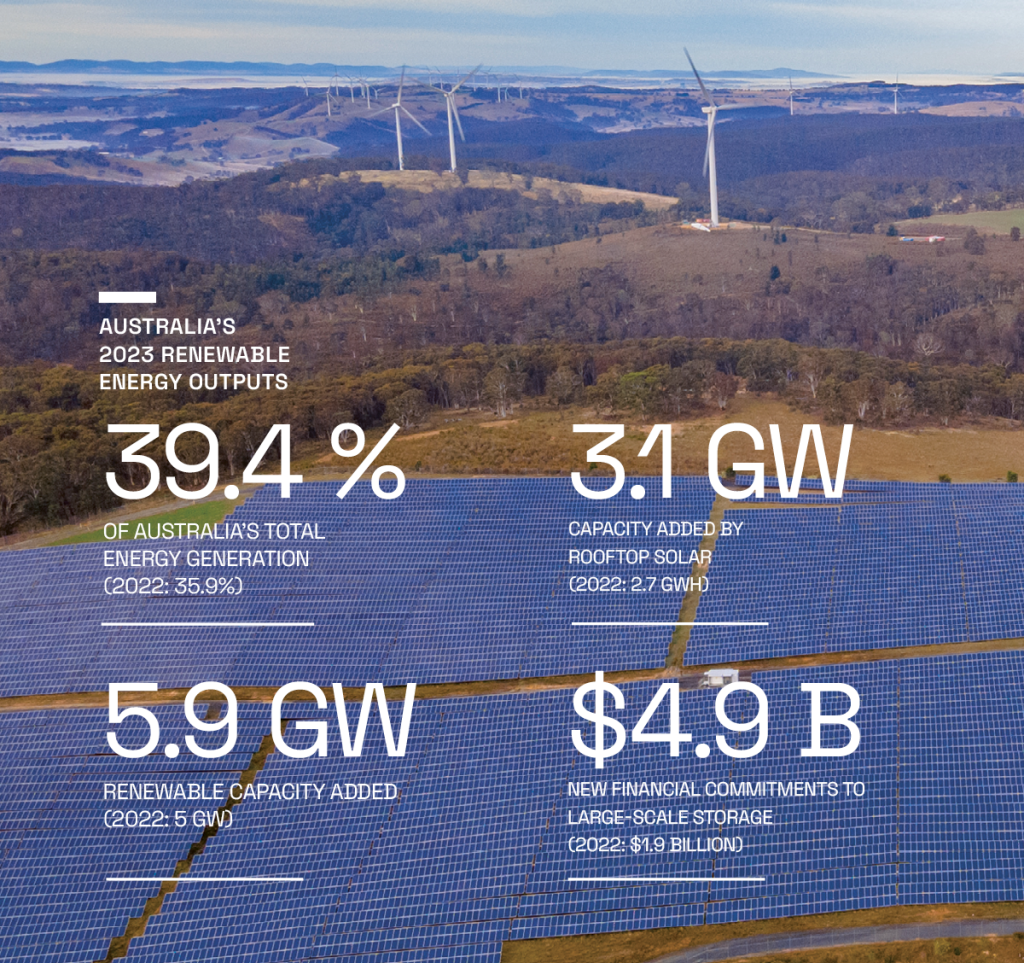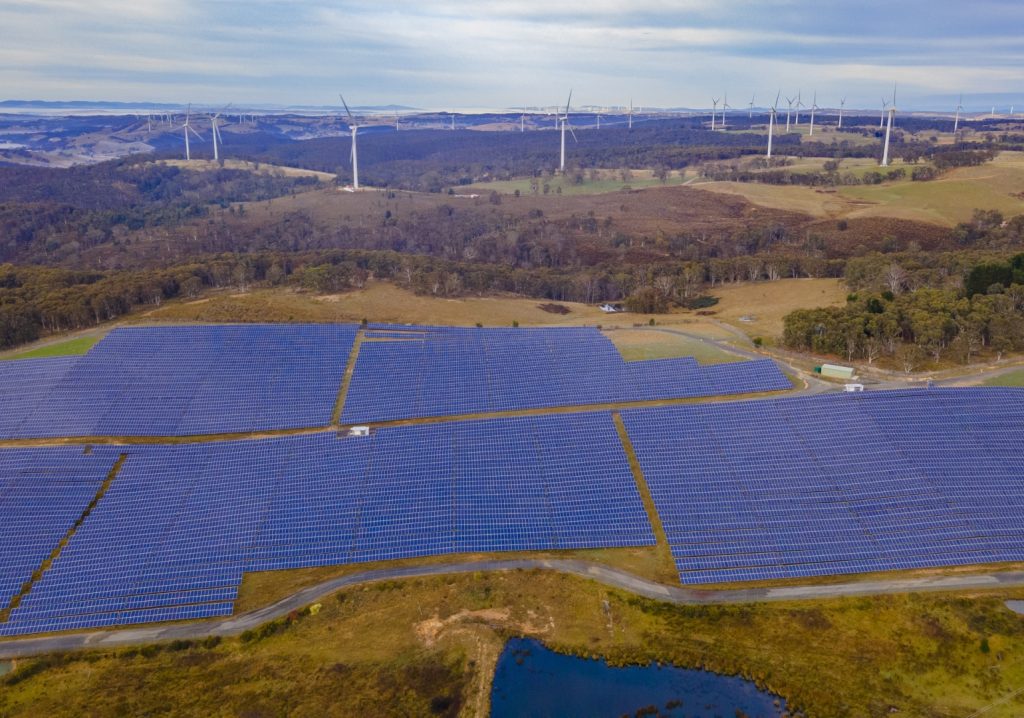The challenge is clear. Australia has committed under the Paris Agreement to a 43 per cent emissions reduction target by 2030. That’s only six short years away.
This article was originally published in the August 2024 issue of create with the headline ‘The great generation reversal’.
In 2020, nearly 80 per cent of Australia’s electricity needs were met by fossil fuels. To meet our 2030 targets, the country needs to reverse that equation and generate 82 per cent of electricity using renewables within a decade. It’s a big ask, but Australia is making progress by flicking the switch on some major projects.
“The first and biggest challenge is removing coal from the grid”, Energy Networks Australia CEO Dominique van den Berg told create.
And it’s not hard to see why. Australia’s reliance on coal is heavy but reducing. According to National Electricity Market (NEM) data, 59.8 per cent of Australia’s electricity in 2023 was generated from coal. But that’s 15 per cent down on a decade ago thanks to the growing influence of renewable power.
“We are on the right path to removing coal and while it sometimes feels slow in this space, we have definitely made progress and are so far ahead of where we were only a decade ago,” van den Berg said.
“Australia is also leading the world in the adoption of rooftop solar, making a significant contribution towards our renewable energy target.”
This is a view reinforced by the 2024 Clean Energy Australia report, which tells us that 39.4 per cent of Australia’s power supply in 2023 was generated from renewable sources, including adding nearly six GW of renewable capacity and $5 billion in investment in large-scale storage solutions.

Firming generation
Shoring up the grid will require firming power to complement Australia’s growing renewable generation capacity. Battery storage is one form of firming.
“At grid-level, battery storage will help firm the variable output from solar and wind power, and there [are] more ‘low hanging fruit’ in the distribution network to unlock, to maximise how we use the infrastructure we already have,” van den Berg said.
In the short term, this firming power can also be delivered by gas-powered generators, which can be fired up in a matter of minutes.
But this relies on a secure supply of natural gas to these plants that hasn’t been easily achievable in recent years.
“The challenge is getting the gas to where it’s most needed at the right time. We have work to do to make sure this happens, as we saw in the southern states’ recent winter.

Industrial decarbonisation
Decarbonisation of industry will take more than transforming the electricity grid, van den Berg pointed out. Other fuel sources need to be considered.
“A lot of the more obvious plays have already been made with the proliferation of solar and wind power across the country, but heavy industry currently using gas cannot readily electrify – or it’s too expensive to do so and they need another pathway to decarbonise.”
That’s where renewable gases such as biomethane and green hydrogen could find a place.
“Biomethane is very interesting. It can be substituted into existing natural gas pipelines and networks with no appliance or network upgrades, so it stands to reason we should look to how we can best use this resource to decarbonise sectors that cannot easily electrify.”
“We need to get biomethane recognised as a legitimate decarbonisation pathway, and tradable in that sense for potential use in aviation or industry.”
Van den Berg also pointed to government support for hydrogen production.
“The recent Hydrogen Production Tax Incentive is a good start to this. However we believe there is more that could be done including exploring a renewable gas target as part of the Australian Government’s six sectoral decarbonisation plans.”
Electrolyser technology is also developing rapidly – several Australian companies are claiming 95 per cent efficiency and lower costs – helping to drive progress.
Three ways to secure a stable energy transition
“Build generation and storage close enough together, and close enough to high-consumption industries.”
“We need to take industry and the public on this journey. There must be a shared belief that this is the right thing to do.”
“There is no one answer to the energy question. We must look at a diversified mix of energy inputs and storage to make sure Australia thrives.”
Policy and regulation
“Australians should be very proud of their regulatory system, but the reality is that it was built for the one-way flow of electrons,” van den Berg said. “It was a stable way to get efficiency from the grid. With solar on rooftops and more consumer energy resources coming online every day, there’s a two-way energy flow that now needs to be accounted for and used in a way that maximises the benefits for all customers.”
Though the economics of transitioning to clean energy are a lot clearer from an industrial perspective – with the recent CSIRO GenCost report stating that renewables are the cheapest option for new build power – the change will still need strong government policy and regulation, and consultation with industry.
“There needs to be a conversation between regulators, networks, retailers, aggregators and customers as to how we get the most value from these assets.
With the cost of developing renewables rapidly decreasing, Australia is also seeing the development of massive amounts of grid storage to help stabilise the system. Some projects at the planning stage have a capacity upwards of five GW.
This is evident in the development of Renewable Energy Zones (REZ) across the country. Sometimes called modern-day power stations, these zones bring together multiple forms of renewable energy and storage in one location.
The Central-West Orana REZ northwest of Sydney will be the nation’s first, having recently secured planning approval.
This project alone aims to leverage economies of scale to deliver 4.5 GW of new network capacity and two GW of long-duration storage.
Accelerating the uptake of EVs
Away from industry, the second-biggest challenge is breaking Australia’s reliance on the internal combustion engine. This is an area where Australia lags behind.
In a recent international survey of vehicle owners, a staggering 49 per cent of surveyed Australians responded that their next vehicle would still have an internal combustion engine. This number is likely driven by a perceived lack of charging infrastructure.
Even so, that’s a “frightening statistic”, van den Berg said, indicating the social licence Australia still needs to build among the general public to make the energy transition a success.
“It’s a chicken and egg scenario,” she said. “We need to combat customers’ range anxiety and give them the confidence to purchase an EV as their next car. The distribution networks can support this role out, in a way that is equitable and cost effective. The more chargers people see around their neighbourhoods, the more confidence they’ll have to buy an EV.”
